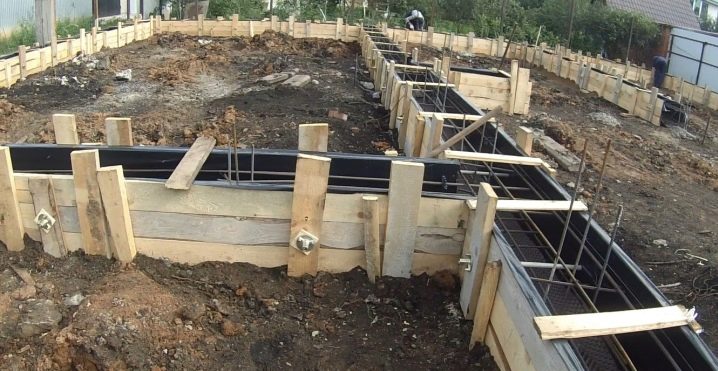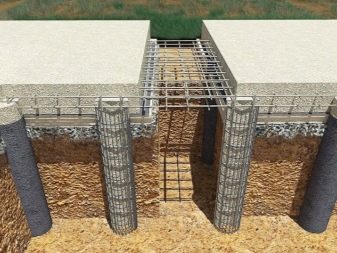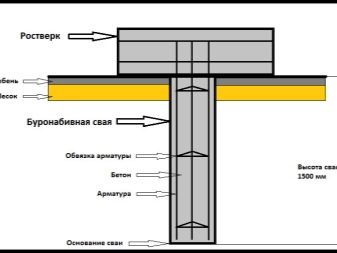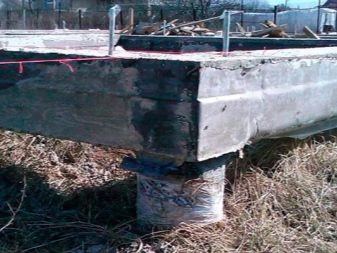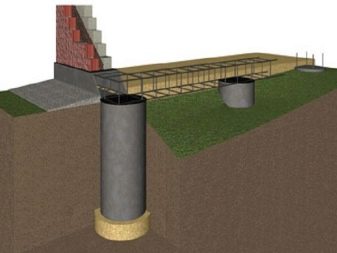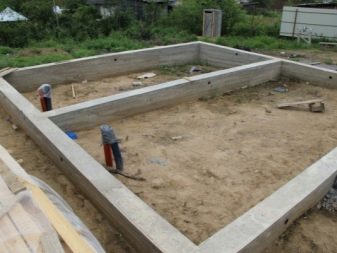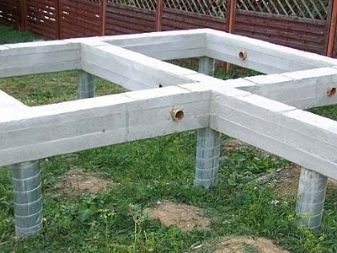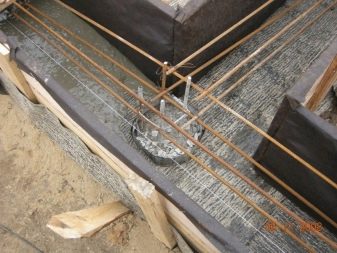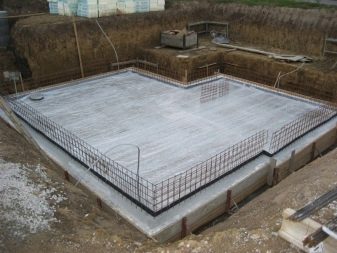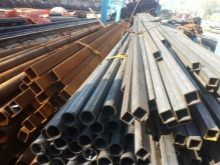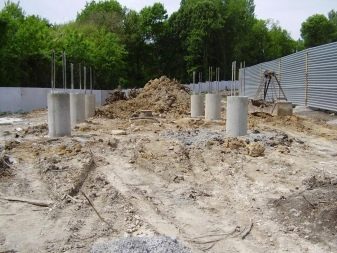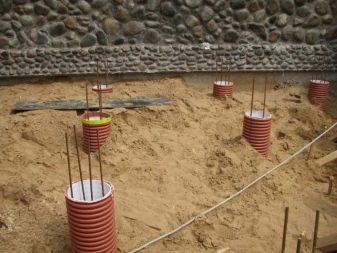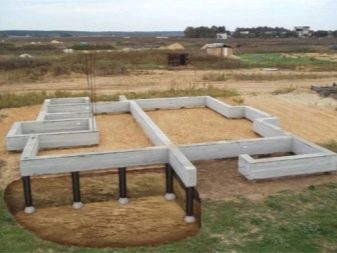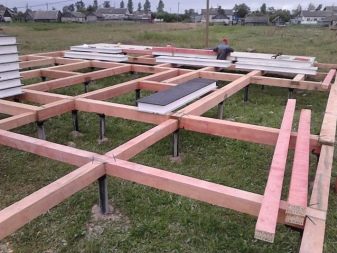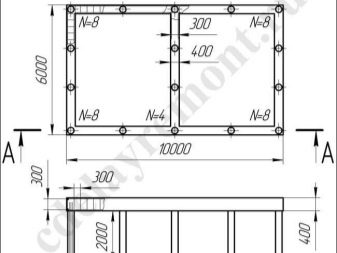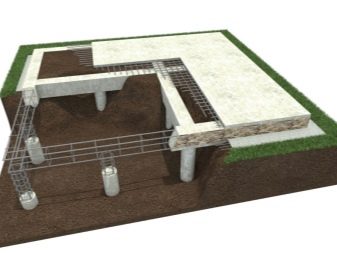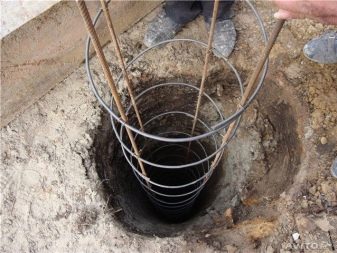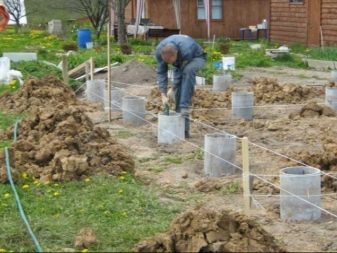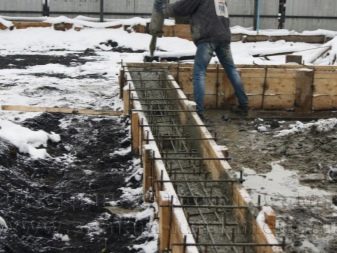Bored foundations with a grillage: technical characteristics and scope of application
The foundation is the main part of the whole building, perceiving the entire load of the structure. Constructions of this type are of several types, which allows their use on various types of soil. Particular attention should be paid to the foundations with the grillage, which has unique technical parameters. In this article we will get acquainted with such systems in more detail, and also consider several types of such foundations.
Design features
Bored foundations with grillage are foundations for residential or industrial buildings. Such a construction consists of several basic elements.
- Supports. They are a kind of pile, made of metal or asbestos pipes. Inside the system is filled with concrete, which is the main component of the structure.The diameter of the support can vary in a wide range, which allows you to change the technical specifications of the product to fit your personal needs.
- Grillage. The device of this element is quite simple. The rostver is a kind of jumper connecting all the vertical supports. Many such materials are used as such frames. Especially popular are the foundations with a monolithic grillage. The lintel here implies a concrete band, which is also associated with supporting elements. From above it turns out something like a strip foundation.
Bored foundations are made on the basis of special SNiP, taking into account the operating conditions.
It should be noted that the design of such a plan can easily be operated on different types of soil.
The pitch of each pile is determined based on the mechanical loads that will impact the base. Please note that the grillage can be located both at a short distance from the ground and go a little bit into the soil.
Purpose
Bored foundations today are particularly popular, as they are distinguished by good technical parameters and ease of construction. They are used as bases for small-sized construction. Often, on the basis of bored foundations, one-story residential houses are built of foam concrete, wood or brick.
The practicality of such a system is also in its independence. With the help of a pile foundation it is quite easy to attach an additional building to the house. There is no need to use the same type of bases as under the main structure.
Technically, almost any non-heavy structures of any form and complexity can be placed on bored foundations. But in most cases it is used precisely in residential construction, where there is no need to use heavy monolithic slabs or heavy duty tapes.
Very often bored foundations are found on swampy or peaty soils. This is due to the fact that the supporting layer capable of withstanding loads is rather deep in the ground (up to 8-10 m). To build in such conditions a strip or monolithic slab foundation is technically very difficult and economically unprofitable.
Kinds
The foundations of the bored type perfectly perceive the load, distributing them around the perimeter. The main element of this system is the grillage. Depending on the location of the ribbon base is divided into several types.
- Recessed The upper line of the grillage is located inside the ground. Its upper part is in the same plane with the soil. Technically, the whole tape is hidden under the ground.
- Ground. The lower part of the grillage is located directly on the ground level. Outwardly, it looks like the tape is lying on the ground. Ground and in-depth foundations are recommended to be built only on resistant soils. In other cases, these structures can be adversely affected by the soil, leading to consistent and relatively rapid destruction.
- Raised. Technically grillage raised on piers above the ground. It turns out that under this element is the air gap. The elevation height may be different, depending on the purpose of the element. Raised foundations are used in most cases on heaving soils, characterized by instability.
Another criterion for classification is the type of grillage, which is of two types.
- Ribbon. The rostverk of this type is a tape, the width of which corresponds to a similar parameter of future walls.Technically, the design is located around the perimeter and follows the contours of the house.
- Slab. Externally, it is a solid slab covering the entire area of the future home. In most cases, structures are made of concrete. Monolithic structures withstand well and distribute the load. There are also prefabricated grillages, which are formed from special metal frames or other materials.
Foundation can be tied using several types of materials:
- timber;
- metal rolling;
- reinforced concrete structures.
Advantages and disadvantages
Pile foundations are particularly popular among many professionals. Such designs have several positive features.
- High performance bearing characteristics. Structures of this type are perfect for brick houses, which have an impressive mass. To extend the service life of such a system, it is important during its construction not to forget about waterproofing.
- Local impact on the ground. During the construction of vertical supports there is no impact on neighboring buildings or elements. This allows you to build foundations even in the vicinity of the constructed structures.
- Possibility of installation in various conditions. Technically, you can drill a hole under the pile even in fairly dense layers of soil.
- Ease of erection. It is not difficult to build a frame, especially with special equipment. This reduces the amount of work, since it is not necessary to form a trench from which a lot of soil is removed.
- Construction is carried out directly on the construction site. To speed up this procedure, you can use a concrete mixer, which allows you to prepare the desired amount of concrete.
The only drawback of bored foundations is the impossibility of using them for high-rise buildings. This is due to the fact that they are unable to withstand very large loads. Therefore, according to reviews of users of the system should be used to form the basis of private houses, which with such a foundation will be able to serve for a very long time.
Fill technology
The construction of bored foundations is not difficult. But at the same time it is important to comply with technical regulations. This will allow you to get a system that can withstand loads without losing bearing parameters for a long time.
To calculate the technical parameters of the foundation using a simplified algorithm.
- The first step is to calculate the total weight of the building. Make it pretty simple. To do this, take the number of materials that will be used in the construction of walls and roofs. After that, for each substance, the specific gravity is refined and the mass is calculated on the basis of the previously obtained volume.
- In the next step you need to know the snow load. Their average values are indicated in special summary tables of SNiP No. 01.07. These figures must be added to the previously calculated total weight of the house.
- After that, the operational loads are calculated. To find them out, multiply the total floor area by a factor of 100 kg / m2.
- Completes the process of calculating the total load on the foundation. Initially, all the numbers obtained at the previous stages are summed, and then the result is multiplied by the safety factor. You can find it in the special technical documentation.
The minimum distance between the support posts should be no more than 2 m.
If this figure is increased, it can lead to rapid wear or cracking.Experts recommend using concrete grade B15-B20 as a material. At the same time, when pouring piles, it is desirable to use more durable analogs (B20) in order to obtain a more durable and durable construction.
When placing the supports, it is important to evenly distribute them around the perimeter of the future building. The support pole must always be positioned on the edge of each line and at the points of their intersection (corner points).
The technology of construction of the bored base with their own hands involves the implementation of mandatory sequential operations.
- Territory preparation. To simplify the work should remove the top layer of soil. After that, the plot is marked. Make it easier with pegs or wooden planks. It is only necessary to control the angles of each side in order to obtain rectangular elements without distortions. Often, such operations are easier to control using strained diagonal threads.
- Making holes. The procedure begins with the drilling of holes for piles. This process is carried out with the help of special drills. Devices can be both manual and engine powered.The depth of drilling is determined by a theoretical or practical way at the preparatory step. This will allow you to know at what distance are the supporting layers of soil.
- Casting supports. The bottom of the dug pit is initially cleaned of loose soil and carefully rammed. Then the surface is filled with coarse and medium sand, forming a kind of pillow. Its thickness can reach 30-50 cm, depending on the structure of the soil. After that, formwork is placed in the drilled channel. In its quality can be used metal pipe, steel sheet and so on. After that, the armature is placed inside the hole. It is pre-welded into a kind of rigid frame. Such reinforcement will give concrete a higher strength and resistance to dynamic loads. When the frame is ready, the pipe is poured with previously prepared concrete. This technology may depend only on the amount of work.
- Construction grillage. The process of construction begins with the installation of formwork. To do this, use wood. If the grillage is planned raised, then you need to provide additional support. They will hold the frame with concrete until it hardens.
When the formwork is ready, a reinforcing frame made of wire is also placed inside it. In order to bind these elements, metal should be left outside the pillars. The procedure is completed by pouring the formwork with concrete. Please note that the pouring procedure should be carried out at one time. Thus, you get a monolithic structure that will be much stronger and more reliable.
If the foundation is built on coarse soils, then the grillage can be placed directly on the soil itself. In another case (heaving soils), experts recommend additionally forming a layer of sand. It will allow to extend the life of the grillage with constant exposure to temperature changes.
Bored foundations with a grillage - this is a unique structure, which allows to significantly reduce the cost of building reliable foundations. During the construction of structures should adhere to technical standards. Therefore, all these tasks should be solved only by experienced professionals who have the appropriate professional equipment.
During the construction of structures should adhere to technical standards.Therefore, all these tasks should be solved only by experienced professionals who have the appropriate professional equipment.
The following video will tell about the peculiarities of the piles with the grillage.
